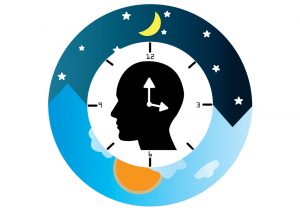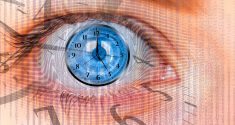Both cluster headaches and migraines have strong connections to the circadian system, the internal clock that regulates body processes, according to a meta-analysis published March 29, 2023 in the online edition of Neurology®, the medical journal of the American Academy of Neurology.
Cluster Headache More Severe in Women
Cluster headache is a rare headache disorder, affecting about 1 in 1,000 people. Chronic cluster headache is defined as recurrent attacks of cluster headache for a year or more without a break or with short breaks without symptoms lasting less than three months. These are brief but extremely painful headaches that can occur for many days or even weeks at a time. These headaches can last anywhere from 15 minutes to three hours. The headache is similar to a migraine, but there are some key differences. Unlike migraines, which can last for a full day, or possibly several days if left untreated, cluster headaches typically last between 15 and 180 minutes. While it’s uncommon to have more than one migraine a day, it’s possible for someone to have as many as eight cluster headaches over a 24-hour period. In addition, migraine pain can vary locally. In contrast, cluster headaches only affect one side of the head, typically on the temple or around the eye. Finally, people with migraines tend to rest in a quiet, dark room, while people with cluster headaches are more likely to become restless and often pace around the room.
While cluster headache is more common in men than women, research suggests the disorder is more severe in women. A study involving 874 people and published online in Neurology®, found that women were more likely to be diagnosed with chronic cluster headache than men. The attacks in women also lasted longer than in men. Women were also more likely to report that their attacks occurred at different times of the day compared to men.
How Headaches and Circadian Rhythms are Related
 While previous research has highlighted the gender difference, the current study has linked it to circadian rhythms. The meta-analysis included all available cluster headache and migraine studies that included circadian features. This included information on the timing of headaches throughout the day and year, and studies on whether genes associated with the circadian clock are more common in people with this type of headache.
While previous research has highlighted the gender difference, the current study has linked it to circadian rhythms. The meta-analysis included all available cluster headache and migraine studies that included circadian features. This included information on the timing of headaches throughout the day and year, and studies on whether genes associated with the circadian clock are more common in people with this type of headache.
Researchers also reviewed studies on cluster headaches and migraines and hormones related to the cirdadian system, including cortisol and melatonin. The data suggest that both of these headache disorders are strongly circadian at multiple levels, particularly cluster headache, the researchers said. This underscores the importance of the hypothalamus – the area of the brain that houses the primary biological clock – and its role in cluster headaches and migraines. It also raises questions about the genetics of triggers, such as sleep changes, known as migraine triggers, which provide clues to the body’s circadian rhythm.
Higher Cortisol and Lower Melatonin Levels
For cluster headache, the meta-analysis found a circadian pattern of headache attacks in 71 percent of all people. The attacks peaked in the late hours of the night and into the early hours of the morning. As the year progressed, people had more seizures in the spring and fall. At the genetic level, cluster headache was associated with two major circadian genes, and five of the nine genes that increase the likelihood of cluster headache are genes with a circadian pattern of expression. People with cluster headaches also had higher cortisol levels and lower melatonin levels than people without cluster headaches.
For migraines, the meta-analysis showed a circadian attack pattern in 50 percent of all people. While the peak of attacks during the day was broad-based, ranging from late morning to early evening, there was a circadian trough during the night, when few attacks occurred. Migraine was also associated with two core circadian genes, and 110 of the 168 genes associated with migraine were genes with a circadian expression pattern. People with migraines had lower levels of melatonin in their urine than those without. In addition, melatonin levels were lower during a migraine attack.
New Treatment Options
According to the researchers, these results increase the potential for the use of circadian treatments for headache disorders. This could include both treatments that rely on circadian rhythms – like taking medications at certain times of the day – and treatments that cause circadian changes, which certain medications can cause.
A limitation of the study was that the researchers had no information about factors that might affect the circadian cycle, such as medications, other disorders like bipolar disorder, or problems with the circadian rhythm like working night shifts.







